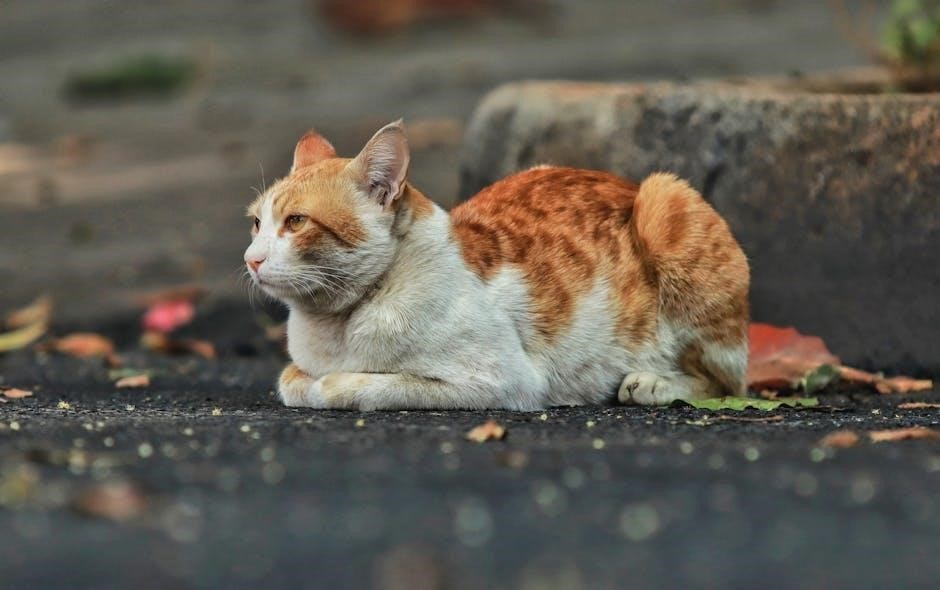Welcome to the Wilds of Eldraine Quick Draft guide! This fast-paced, balanced format offers diverse strategies and playstyles, making it exciting for both new and experienced players.
Overview of the Set and Its Mechanics
Wilds of Eldraine introduces a dynamic Limited format with unique mechanics like Food and Adamant, shaping gameplay around resource generation and aggressive strategies. The set emphasizes synergy between creatures and spells, with a focus on fast-paced, creature-heavy decks. Key mechanics include Food tokens, which provide mana advantages, and Adamant, enhancing creatures when certain mana costs are paid. These interactions create a balanced yet competitive environment, rewarding players for adapting to the draft’s signals and building cohesive strategies. The set’s design encourages both all-in aggression and midrange value, making it versatile for diverse playstyles.
The Speed and Balance of the Format
Wilds of Eldraine is characterized by its fast-paced gameplay, with an emphasis on early aggression and quick wins. The format balances this speed with a variety of defensive options, allowing for midrange and control strategies to thrive. Aggro decks, such as Boros and Rakdos, dominate early, while Golgari Midrange and Selesnya Value decks provide late-game power. The set’s balance ensures that no single archetype overwhelms the format, fostering a competitive yet enjoyable environment. This equilibrium makes Wilds of Eldraine appealing for both aggressive and strategic players, keeping each game dynamic and unpredictable.
Key Playstyles and Deck Archetypes
Wilds of Eldraine supports a variety of playstyles, with distinct deck archetypes shaping the format. Aggro decks like Boros and Rakdos Rats focus on early aggression, flooding the board with cheap, evasive creatures. Midrange strategies, such as Golgari Food, revolve around generating card advantage through synergies and value trades. Gruul Monsters and Selesnya Midrange round out the meta, offering creature-heavy builds with late-game power. The format rewards both all-in aggression and methodical, value-oriented play, ensuring a wide range of viable strategies for drafters to explore and master.

Key Mechanics in Wilds of Eldraine
Wilds of Eldraine introduces Food, creating long-term value, and Adamant, empowering aggressive strategies. These mechanics, alongside other synergies, define the set’s dynamic and interactive gameplay.
Food and Its Impact on the Game
Food is a transformative mechanic in Wilds of Eldraine, creating long-term value by generating 1 life and enabling powerful synergies. Cards that produce or interact with Food tokens provide sustained advantages, encouraging players to build around this mechanic. Food strategies often focus on cheap, efficient creatures and payoff cards that reward stockpiling tokens. Protecting Food generators is crucial, as they can swing games in the late stages. This mechanic adds depth, rewarding players who balance early aggression with long-term planning and resource management.
Adamant and Its Role in Aggro Decks
Adamant is a powerful mechanic that shines in aggressive decks by rewarding players for generating Food tokens. Creatures with Adamant grow significantly when you have two or three Food tokens, becoming formidable threats on the battlefield. This mechanic incentivizes players to prioritize Food token generation early in the game, enabling their creatures to scale into the mid-to-late game. Aggro decks leverage Adamant to create explosive turns, overwhelming opponents with enhanced creatures. Managing Food tokens effectively is key to maximizing Adamant’s potential, making it a cornerstone of aggressive strategies in Wilds of Eldraine Quick Draft.
Other Notable Mechanics and Interactions

Beyond Food and Adamant, Wilds of Eldraine introduces intriguing mechanics that shape gameplay. One such interaction is the synergy between Food tokens and cards that manipulate life totals, enabling life-gain strategies to fuel Adamant. Additionally, the set features Adventurer cards, which offer versatile effects that can swing games. The interaction between these mechanics creates a dynamic environment where adaptability is key. Understanding how these elements synergize is crucial for drafting cohesive decks and maximizing your strategy in Wilds of Eldraine Quick Draft.

Color Tier List for Draft
Golgari, Boros, and Rakdos dominate as Tier 1 pairings, offering strong synergy and power. Gruul and Selesnya follow as Tier 2, while others fall behind in consistency and strength.
Top Color Pairings (Golgari, Boros, Rakdos)
Golgari, Boros, and Rakdos are the top-tier color pairings in Wilds of Eldraine Quick Draft, each offering unique strengths. Golgari excels with Food token generation and creature synergy, while Boros aggression shines through low-cost creatures and Equipment. Rakdos combines cheap, evasive threats with removal, making it a formidable force. These pairings consistently perform well due to their strong core strategies and high power level.
Players often prioritize these color combinations for their reliability and ability to dominate games quickly. They are well-supported by the set’s mechanics, ensuring a competitive edge in both early and late picks.
Second-Tier Color Pairings (Gruul, Selesnya)

Gruul and Selesnya are solid, yet slightly less consistent, color pairings in Wilds of Eldraine Quick Draft. Gruul leverages large creatures and trample effects, supported by mana acceleration, to overwhelm opponents. Selesnya focuses on small, evasive creatures and lifegain synergy, often pairing well with convoke spells. Both pairings can be competitive but lack the top-tier reliability of Golgari, Boros, or Rakdos.
While they may not dominate as frequently, Gruul and Selesnya offer unique playstyles that can still succeed with the right draft strategy. They are excellent choices when the draft goes in their direction or when key archetype enablers are available.
Less Popular Color Pairings and Why
Certain color pairings, like Azorius (blue-white) and Izzet (blue-red), are less popular in Wilds of Eldraine Quick Draft due to their lack of strong synergies and consistent payoffs. Azorius often struggles with mana inefficiency and limited late-game power, while Izzet relies on card advantage engines that are hard to assemble. Similarly, other pairings like Simic (green-blue) and Jeskai (red-blue-white) face challenges in competing with the top-tier archetypes. These combinations are not inherently bad but require specific conditions to succeed, making them less favored in drafts compared to Golgari, Boros, or Rakdos.

Top Archetypes in Wilds of Eldraine Draft
Golgari Food, Boros Aggro, and Rakdos Rats dominate the format. Golgari excels with Food synergies, Boros punishes with cheap creatures, and Rakdos overwhelms with recursive threats.
Golgari Food: Strengths and Key Cards
Golgari Food is a top archetype, leveraging Food tokens to generate immense value. Cards like Gilded Goose and Trail of Crumbs enable consistent card advantage. The deck thrives on cheap, evasive creatures and synergies with Food generation, making it resilient and difficult to disrupt. Key cards include Okiba, Tale Weaver, which grows with each Food consumed, and Harvest’s Might, providing explosive starts. Drafting early Food enablers ensures a strong foundation, while late-game payoffs like Feasting Troll King seal victories. This archetype rewards players who prioritize consistency and synergy in their picks.
Boros Aggro: Strategy and Core Cards
Boros Aggro is a relentless, fast-paced archetype that overwhelms opponents with cheap, aggressive creatures and explosive starts. Core cards like Fervent Champion and Scorching Dragonfire enable early-game pressure and removal. The deck thrives on synergy, with Bishop of Binding providing a powerful anthem effect. Drafting low-toughness, high-impact creatures like Tin Street Dodger ensures consistent aggression. Boros also leverages Adamant to cheat out larger threats like Embercleave. Prioritizing cheap removal and anthem effects allows Boros to dominate the early game and close out matches quickly, making it a formidable choice in Quick Draft.
Rakdos Rats: Synergy and Playstyle
Rakdos Rats is an aggressive, synergy-focused archetype that leverages the power of rats and evasion to overwhelm opponents. Core cards like Chittering Host and Pack Rat provide early-game pressure and card advantage. The deck thrives on cheap, evasive creatures paired with removal like Riot’s Warning to clear the way. Synergy with Massacre Wurm and other rat payoffs amplifies the threat level. Drafting low-cost, high-impact cards ensures consistent aggression. Rakdos Rats excels at controlling the board through cheap removal and token generation, making it a strong contender for players seeking a fast, interactive playstyle in Quick Draft.
Commons and Their Importance
Commons form the backbone of any successful draft deck. They provide consistency and fill essential roles, enabling key strategies and synergies throughout the game.
Best Commons in Each Color
White: Pollen-Shield Hare is a standout, providing evasion and value. Blue: Faerie Duelist excels in tempo-based strategies. Black: Dreadful Doll offers sacrifice synergy. Red: Fervent Fury enables aggressive starts. Green: Gilded Light supports ramp and fixing. Each color’s commons are crucial for consistency and enabling key strategies, making them high priorities in any draft. Ensure you prioritize these early to build a strong foundation for your deck.
Neutral and Colorless Commons to Prioritize
Neutral and colorless commons like Gilded Light and Foul-Tongue Shriek are versatile and powerful. These cards fit into any deck, offering utility and synergy with key mechanics. Gilded Light shines in Food and ramp strategies, while Foul-Tongue Shriek bolsters sacrifice and Adamant builds. Neutral cards are rare but impactful, providing flexibility across archetypes. Prioritize them early, as they enhance consistency and enable late-game power. Their versatility makes them valuable additions to any draft deck, ensuring you maintain momentum and adaptability in matchups.
Draft Strategy and Tips
Mastering Wilds of Eldraine Quick Draft requires flexibility and adaptability. Focus on early-game consistency, prioritize synergies, and build around your strongest cards to dominate the meta.
Early Picks: What to Prioritize
In Wilds of Eldraine Quick Draft, prioritize cards with immediate impact, such as low-cost creatures and removal spells. These ensure early-game dominance and set the tone for your strategy. Focus on high-value commons like Footlight Fiend and Chandra’s Flame, which provide consistent pressure and versatility. Avoid overcommitting to expensive cards early, as the format rewards quick starts and adaptability. Additionally, be mindful of synergy with your first picks, as this lays the foundation for a cohesive gameplan. Balancing power and flexibility is key to success in the early draft stages.
Signaling and Adapting to the Draft
Understanding signaling is crucial in Wilds of Eldraine Quick Draft. Pay attention to the cards passed to you and those taken by opponents. This helps identify underdrafted archetypes and informs your strategy. Adaptability is key—be ready to pivot if your initial plan isn’t supported. For example, if high-value commons in your colors are scarce, consider splashing a complementary color or shifting focus to synergistic cards. Effective signaling and adaptation ensure you maximize your deck’s potential, even in a fast-paced format like Quick Draft. Stay flexible and responsive to the draft’s flow for optimal results.
Splashing and When to Take Risks
Splashing in Wilds of Eldraine Quick Draft can be rewarding but requires careful consideration. Assess the power level of splashed cards and their synergy with your main colors. Splash only if it significantly enhances your deck’s strength. High-impact, low-mana cost cards like removal or finishers justify splashing, especially in BO1 where games are shorter. However, avoid over-splashig, as it dilutes your mana base and consistency. Weigh the risks against potential benefits, and only commit if the payoff is substantial. Splashing wisely can elevate your deck but requires a strategic approach to maintain balance and functionality.

Quick Draft Specific Tips
Wilds of Eldraine Quick Draft demands precise strategies. Focus on consistency, early-game power, and adaptability. Prioritize high-impact cards and build around synergy to dominate BO1 matches effectively.
BO1 Format: How It Changes Draft Strategy
In Wilds of Eldraine Quick Draft, the BO1 (Best-of-One) format shifts strategy significantly. Players must prioritize consistency and early-game power, as there’s no room for comeback mechanics. Cards with immediate impact, such as cheap creatures and removal, become highly valuable. Drafting a focused, linear game plan is crucial, as sideboarding isn’t an option. Additionally, the importance of evasion and tempo increases, making cards that can quickly close games more desirable. This format rewards decks that can execute their strategy efficiently without relying on late-game turns, making every pick in the draft critical to success.

Key Cards for Quick Draft Success

Wilds of Eldraine Quick Draft success often hinges on key cards that provide early advantages. Cheap creatures like Pollen-Shield Hare and Gallant Cavalry enable quick starts. Removal spells such as Blazing Response and Bonecrusher Giant are essential for disrupting opponents. Food-generating cards like Trail of Crumbs and Gilded Light support aggressive strategies. Additionally, cards with evasion, like Faerie Miscreant, ensure consistent damage. Prioritizing these cards ensures a strong foundation for your deck, maximizing your chances of winning in the fast-paced BO1 format. Their impact is crucial in a format where games are decided quickly.
Wilds of Eldraine Quick Draft is a dynamic format where strategy and adaptability shine. Embrace the fast pace, focus on key cards, and explore diverse archetypes to succeed.
Final Tips for Maximizing Your Draft Experience
To dominate in Wilds of Eldraine Quick Draft, prioritize early picks and adapt to signals. Focus on consistency in BO1 matches and leverage key commons. Stay flexible with splashes and maintain a balanced deck. Practice with data-driven strategies to refine your approach. Embrace the format’s speed and explore diverse archetypes like Golgari Food or Boros Aggro. Mastering these elements will elevate your drafting skills and lead to more victories in this engaging format.

Resources for Further Improvement
Enhance your drafting skills with resources like Draftsim’s Ultimate Guide and expert articles from Magic: The Gathering pros. Utilize MTG Arena’s deck tracker for insights and refine your picks with data-driven strategies. Explore community platforms like Reddit and Discord for shared deck lists and player experiences. Watch streams and gameplay tutorials to observe top-tier drafting techniques. Lastly, experiment with different archetypes in practice drafts to hone your adaptability and decision-making. These tools will help you master Wilds of Eldraine Quick Draft and improve your overall Limited play.

